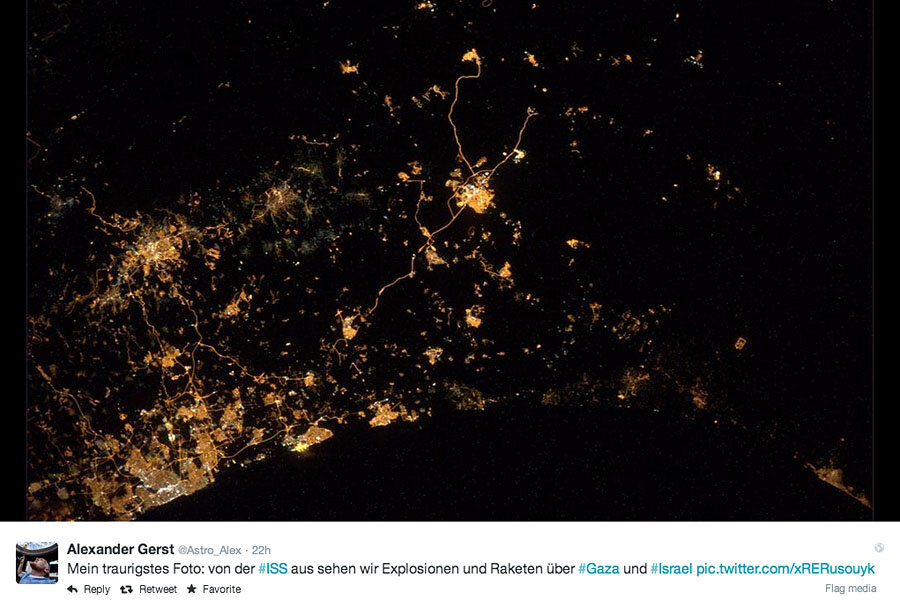Astronaut snaps 'saddest photo yet'
Loading...
Sometimes you need to take a step back from a political conflict to be able to see the big picture.
In the case of clashes between Israel and Hamas, it may take a trip to outer space.
An astronaut shared a photo with Twitter followers Wednesday that captured the conflict from afar. The image appears to show rockets and explosions glowing through the darkness.
Alexander Gerst, a German astronaut, tweeted from the International Space Station Wednesday what he called "My saddest photo yet."
This image comes after the death toll in the conflict rose to more than 700, US flights to Tel Aviv were temporarily banned, and Israel's defense minister threatened to escalate the conflict.
Dr. Gerst said in his tweet, "From #ISS we can actually see explosions and rockets flying over #Gaza & #Israel." Haaretz, an Israeli newspaper, reported that the bright lines and splotches of light captured could have resulted from rocket explosions, as Gerst suggests, or "Iron Dome interceptions or the explosion of Israeli munitions."
And this isn't the first time astronauts on the ISS, which orbits about 220 miles above Earth's surface, have photographed newsworthy events.
When two hijacked planes slammed into the twin towers in New York City on Sept. 11, 2001, a NASA astronaut snapped a picture of a massive plume of smoke streaming away from the collapsing buildings. Nearly a decade later, astronauts on the ISS shared images of the ruin left in Port-au-Prince following a magnitude-7.0 earthquake that hit Haiti in 2010, and floodwaters soaking coastal cities after a 2011 quake and tsunami devastated Japan.
Gerst tweeted many photos and videos since his May arrival on the ISS. Sometimes he captures clear views of places he has vacationed personally such as the Great Salt Lake in Utah, and other times he shares clouds, storm systems, or auroras. Gerst also posted images of the Nile River, the pyramids, and Mt. Etna spewing smoke.








